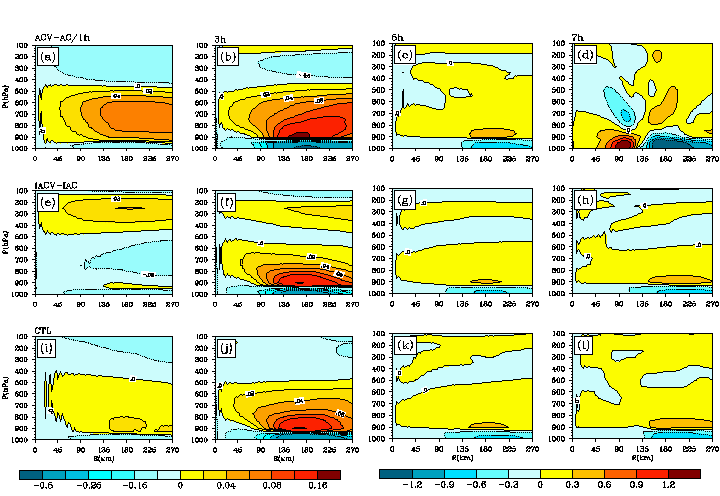How do monsoon trough intraseasonal oscillation and interannual variation affect tropical cyclogenesis over the western North Pacific?
Date:2014-12-03
The tropical cyclone (TC) research is a hot topic in atmosphere research over the past several decades. The key question is TC genesis. Over the WNP, approximately 70%–80% of TCs develop within a monsoon trough (MT). Thus, it is necessary to make a deep research on the relationship about monsoon trough and TC genesis in difference time scales.
Dr. CAO Xi, Prof. CHEN Wen, and Prof. CHEN Guanghua from the Institute of Atmospheric Physics/CAS and Prof. Tim LI from University of Hawaii and Prof. Melinda PENG from Naval Research Laboratory made joint efforts to address two critical scientific questions: How do the large-scale fields of MT intraseasonal oscillation (ISO) and interannual variation (IAV) affect the TC genesis? And What are the relative contributions of the dynamic and thermodynamic processes to TC formation during this period?
Model results show that MT ISO and IAV can modulate TC development through both dynamic and thermodynamic processes. The dynamic impact is attributed to the lower-middle tropospheric large-scale vorticity associated with MT. Interactions between a cyclonic vorticity in the lower-middle troposphere during the active ISO phase/strong years and a vortex lead to the generation of vortex-scale outflow at midlevel, which promotes the upward penetration of friction-induced ascending motion and thus upward moisture transport. In addition, the low-level convergence associated with active ISO/strong years also helps the upward moisture transport. On the other hand, the large-scale flow associated with inactive ISO/weak years suppresses upward motion near the core by inducing the midlevel inflow and the divergence forcing within the boundary layer, both inhibiting TC development. The thermodynamic impact comes from greater background specific humidity associated with active ISO/strong years that allow a stronger diabatic heating. Experiments that separated the dynamic and thermodynamic impacts of the ISO showed that the thermodynamic anomaly from active ISO contributes more to TC development, while the dynamic anomalies from inactive ISO can inhibit vortex development completely. IAV sensitivity experiments show that the thermodynamic impact associated with the MT IAV is comparable to the dynamic impact.

The vertical–radial cross section of azimuthal mean perturbation radial wind (m s?1) from t = 1 h to t = 7 h in the interval of 2 h for ACV relative to AC (top), for IACV relative to IAC (middle) and CTL (bottom).
References:
Cao, X., T. Li, M. Peng, W. Chen, and G. H. Chen, 2014: Effects of monsoon trough interannual variation on tropical cyclogenesis over the western North Pacific, Geophys. Res. Lett., 41, 4332–4339, doi: 10.1002/2014GL060307. http://onlinelibrary.wiley.com/enhanced/doi/10.1002/2014GL060307/
Cao, X., T. Li, M. Peng, W. Chen, and G. H. Chen, 2014: Effects of monsoon trough intraseasonal oscillation on tropical cyclogenesis over the western North Pacific, J. Atmos. Sci., 71, 4639–4660, doi: 10.1175/JAS-D-13-0407.1. http://journals.ametsoc.org/doi/abs/10.1175/JAS-D-13-0407.1
Key words: Pacific Ocean,
Contact: Dr. CAO Xi, caoxi09@mail.iap.ac.cn
